
- The Architectural Marvel of the Sagrada Familia Temple in Barcelona
- Exploring the Unique Design Elements of Gaudí's Masterpiece
- A Guide to Visiting the Sagrada Familia: Tips and Insights
- The Historical Significance of the Sagrada Familia Temple
- Understanding the Symbolism Behind Sagrada Familia's Facades
- Why the Sagrada Familia Should Be on Your Barcelona Itinerary
In the heart of Barcelona, the Sagrada Familia stands as a stunning testament to architectural innovation and artistic vision. Designed by the renowned architect Antoni Gaudí, this basilica captivates visitors with its intricate facades and towering spires, offering a glimpse into the divine through its unique design and symbolism.
For anyone exploring the vibrant streets of Barcelona, the **Awe-Inspiring Sagrada Familia Temple in Barcelona: A Must-Visit Attraction** is an experience that cannot be missed. Its ongoing construction, which began in 1882, adds to the allure, making each visit a chance to witness history in the making while immersing oneself in Gaudí's unparalleled genius.
The Architectural Marvel of the Sagrada Familia Temple in Barcelona
The Sagrada Familia Temple is not just an architectural accomplishment; it embodies the essence of artistic expression through its unique style. Gaudí's vision integrates elements of Gothic and Art Nouveau, resulting in a monument that defies conventional architectural norms. The intricate details, such as the elaborate stone carvings and vibrant stained-glass windows, create a visually stunning interplay of light and shadow within the basilica.
One of the most remarkable features of the Sagrada Familia is its towering spires, each representing a different aspect of Christianity. As of now, the plan includes a total of 18 spires, symbolizing the twelve apostles, the Virgin Mary, the four evangelists, and Jesus Christ. This ambitious design seeks to achieve a verticality that draws the eye upwards, fostering a spiritual connection with the heavens.
Visitors are often struck by the basilica's dynamic facades, each telling a different story from the life of Christ. The Nativity Facade, adorned with scenes of birth and joy, contrasts sharply with the Passion Facade, which embodies suffering and sacrifice. This dichotomy not only enhances the narrative quality of the structure but also invites observers to reflect on the deeper meanings behind each artistic element.
- Construction Timeline: Began in 1882 and is expected to be completed in 2026.
- Main Materials: Sandstone, brick, and various natural stones are utilized to create a sense of harmony with nature.
- Visitor Experience: Guided tours often include insights into Gaudí's innovative techniques, like the use of hyperbolic paraboloids and catenary arches.
Exploring the Unique Design Elements of Gaudí's Masterpiece
Exploring the Sagrada Familia reveals a tapestry of design elements that showcase Antoni Gaudí's profound understanding of nature and geometry. His innovative use of hyperbolic paraboloids and catenary arches not only enhances the structure's aesthetic appeal but also contributes to its stability and strength. These forms emulate natural structures, allowing the basilica to resonate with the environment around it, inviting a deeper appreciation for the interplay between architecture and nature.
Each facade of the Sagrada Familia is a narrative in itself, intricately designed to convey different themes. The Passion Facade, with its stark and angular forms, expresses the somber aspects of Christ's crucifixion, while the Nativity Facade offers a celebration of life with its flowing lines and joyous imagery. This contrast invites visitors to experience the full spectrum of Christian symbolism and emotion, making each visit a personal journey of reflection.
The interior of the basilica is equally captivating, featuring a forest-like structure where columns mimic tree trunks, branching out to form a canopy of vaulted ceilings. This unique design element enhances the feeling of being enveloped by nature, creating a serene and reverent atmosphere. Gaudí's vision was to integrate light and color into the worship space, and the stained-glass windows play a crucial role in achieving this, casting a kaleidoscope of colors that shift throughout the day.
- Innovative Features: The use of natural forms and geometric patterns in columns and arches.
- Symbolism: Each design element is imbued with deeper meanings, reflecting Christian beliefs.
- Visitor Engagement: Interactive displays offer insights into Gaudí's thought process and architectural techniques.
A Guide to Visiting the Sagrada Familia: Tips and Insights
When planning your visit to the Sagrada Familia, it's essential to book your tickets online in advance. This not only saves you time but also helps you avoid long queues, especially during peak tourist seasons. Consider visiting during off-peak hours for a more tranquil experience.
As you explore the Sagrada Familia, take note of the different areas to immerse yourself fully in its beauty. Highlights include:
- Nativity Facade: A celebration of the birth of Christ with intricate sculptures.
- Passion Facade: A stark representation of Christ's suffering and sacrifice.
- Interior Columns: Designed to resemble tree trunks, enhancing the natural atmosphere.
Don't forget to allocate time for the stunning towers. The views from the top are nothing short of breathtaking, providing a unique perspective of Barcelona. To access the towers, you must reserve this option when purchasing your tickets, as availability is limited.
For those interested in the historical context and architectural details, consider joining a guided tour. Knowledgeable guides can offer fascinating insights into Gaudí's vision and the symbolism embedded in the structure, enriching your overall experience.
The Historical Significance of the Sagrada Familia Temple
The Sagrada Familia Temple is not merely an architectural gem; it holds profound historical significance that reflects the cultural evolution of Barcelona. Initially conceived in the late 19th century, this basilica emerged during a period of intense artistic and architectural innovation, marking a departure from traditional styles. Gaudí's design embodies the spirit of modernisme, a Catalan movement that sought to redefine art and architecture through organic forms and intricate details.
Its construction, which began in 1882, has continued for over a century, symbolizing a commitment to artistic vision and communal effort. Today, the Sagrada Familia stands as a collaborative endeavor, with contributions from thousands of artisans and builders across generations. This ongoing project not only honors Gaudí's original vision but also reflects the evolving identity of Barcelona, as it transforms into a significant landmark recognized worldwide.
The temple's design intricately weaves together various elements of Christian symbolism, with each facade and spire telling a story of faith and spirituality. From the Nativity Facade's depiction of Christ's birth to the Passion Facade's portrayal of suffering, these artistic expressions offer insights into the historical context of the time and Gaudí's intentions. Visitors can appreciate how the basilica serves as both a place of worship and a narrative of religious history, bridging the past with the present.
Furthermore, the Sagrada Familia's status as a UNESCO World Heritage Site reinforces its importance on a global scale. This recognition highlights not only its architectural brilliance but also its role in fostering cultural dialogue and understanding. The temple is a must-visit attraction for anyone wishing to explore the rich tapestry of Barcelona's history and artistic legacy, making it a living monument to creativity and faith.
Understanding the Symbolism Behind Sagrada Familia's Facades
The Sagrada Familia's facades are rich in symbolism, each meticulously crafted to convey profound religious narratives. The **Nativity Facade** celebrates the birth of Christ, adorned with playful and joyful figures that evoke the spirit of innocence. In contrast, the **Passion Facade** starkly represents the suffering of Jesus, characterized by angular forms and dramatic sculptures that depict the crucifixion, inviting reflection on the duality of joy and sorrow in the Christian faith.
Additionally, the **Glory Facade**, still under construction, will serve as the main entrance and is designed to symbolize the glory of Jesus and the path to God. This facade will depict themes of resurrection and eternal life, emphasizing the journey of believers toward spiritual enlightenment. Each facade harmonizes with the overall architectural vision, illustrating Gaudí's intention to inspire visitors through a narrative that transcends time.
Visitors can appreciate the intricate details that embody Christian beliefs, such as the **column designs** that represent tree trunks, symbolizing the connection between nature and divinity. The facades also feature various animals and plants, reinforcing the idea that all creation reflects God's grandeur. This interweaving of nature and spirituality invites observers to contemplate their own relationship with the divine through Gaudí's artistic lens.
Ultimately, the symbolism behind the Sagrada Familia's facades serves not only to educate but also to inspire awe in those who visit. This architectural masterpiece encourages deep reflection on faith and the human experience, making it a vital pilgrimage site for those seeking spiritual and artistic enrichment. Each visit offers a unique opportunity to delve into the layers of meaning embedded in its design, enhancing the overall experience of this iconic landmark.
Why the Sagrada Familia Should Be on Your Barcelona Itinerary
When planning your Barcelona itinerary, the Sagrada Familia is undoubtedly a top contender for a must-visit attraction. Its unique combination of architectural splendor and cultural significance makes it an essential stop for travelers. Not only does it showcase the genius of Antoni Gaudí, but it also represents the rich history of Barcelona, offering insights into the city’s artistic evolution over more than a century.
One of the key reasons to include the Sagrada Familia in your itinerary is the opportunity to witness ongoing construction that has spanned generations. This monumental project continues to evolve, with each visit presenting a chance to observe new developments and changes. The basilica's intricate designs and ambitious scale reflect a dedication to craftsmanship and creativity that is rare in modern architecture. Visitors can marvel at the craftsmanship that goes into every stone, making each visit a fresh experience.
Moreover, the Sagrada Familia stands as a beacon of spiritual significance, with its design deeply rooted in Christian symbolism. The various facades illustrate key narratives from the Bible, inviting contemplation and reflection. As you explore the different aspects of the basilica, you’ll find that each area is imbued with meaning, encouraging a deeper understanding of the faith and artistry that inspired Gaudí’s vision.
Lastly, the breathtaking views from the towers offer an unparalleled perspective of Barcelona. Ascending these heights not only rewards visitors with stunning panoramas of the city but also enhances appreciation for the intricate details of Gaudí's design from above. Be sure to reserve your spot for this experience, as it is a highlight of the visit that truly complements the overall journey through Gaudí's extraordinary masterpiece.
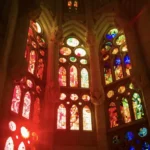 Unveiling the Beauty: Exploring the Stained Glass Windows of Sagrada Familia, Barcelona
Unveiling the Beauty: Exploring the Stained Glass Windows of Sagrada Familia, Barcelona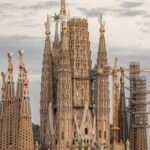 The Sagrada Familia in Barcelona: When Will it Be Finished?
The Sagrada Familia in Barcelona: When Will it Be Finished?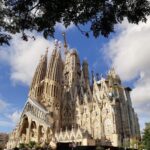 Sagrada Familia Barcelona: What Is It and Why You Must Visit
Sagrada Familia Barcelona: What Is It and Why You Must Visit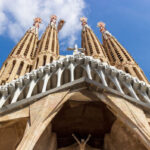 The Ultimate Guide to Sagrada Familia in Barcelona: Key Information and Tips
The Ultimate Guide to Sagrada Familia in Barcelona: Key Information and Tips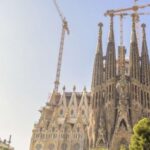 Experience the Marvel of Sagrada Familia with Barcelona Tickets
Experience the Marvel of Sagrada Familia with Barcelona TicketsIf you want to know other articles similar to Awe-Inspiring Sagrada Familia Temple in Barcelona: A Must-Visit Attraction you can visit the category WHERE YOU CAN GO.
Deja una respuesta

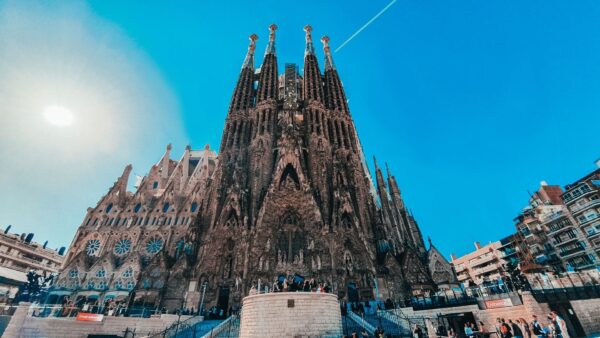








Read more!